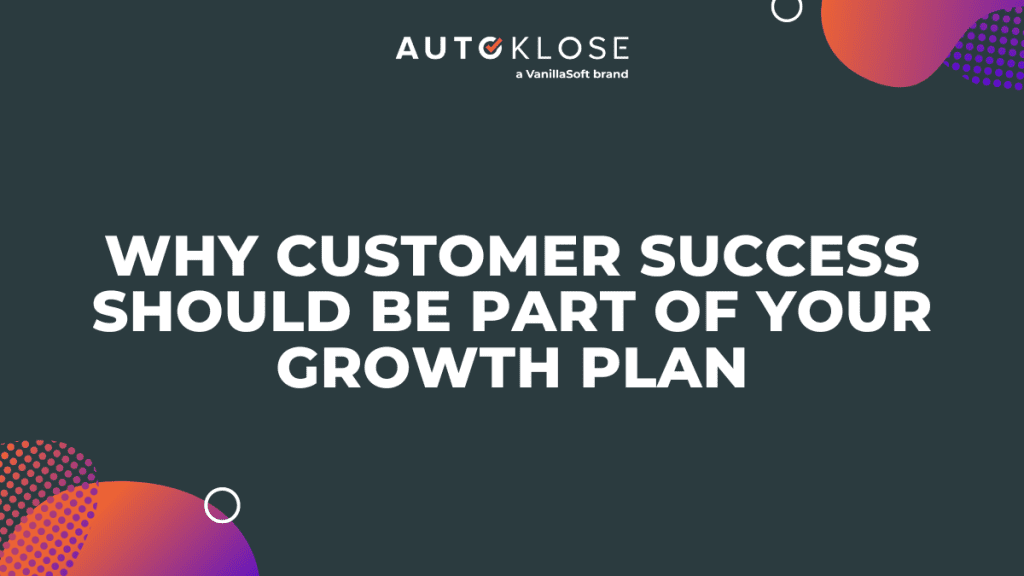
- Businesses looking to grow need to invest in customer support and success teams to keep their customers happy, reduce churn, and leverage upselling opportunities.
- Jelena Petrovic has worked in customer success at Autoklose for the last five years with a churn rate that’s well below the industry average. She loves the mix of relationship-building and selling in her role, and she knows how to keep her customers coming back for more.
- Onboarding can be a delicate balance, so Jelena recommends a personalized strategy for each client. Establish trust by going above and beyond — from there, upselling will happen organically.
Growing a business isn’t just about selling — it’s also about keeping customers happy.
With so much focus on closing deals, converting prospects, and hitting targets, we often overlook what happens after getting to yes, but it’s a crucial point in the process. If you abandon your new customers, they might do the same to you, leading to the dreaded (but all too common) problem of churn.
If a customer walks away, all that work will have been for just one sale. The old adage that it takes more resources to acquire a new customer than to retain an existing one remains truer than ever. And this is why customer support and success need to be an essential part of any growth plan.
Jelena Petrovic knows a thing or two about keeping customers happy: She’s been doing so at Autoklose for the last five years. She joined Ollie Whitfield on an episode of the 0 to 5 Million podcast to share her inside view on running an effective success and support strategy.
She shares great advice on what qualities to hire for, how to handle onboarding for different types of clients, and how to master the upsell.
Hiring: Soft skills wanted
Jelena defines customer support and success as “the first line of defense of every company.”
The two roles are very similar — and often combined — but customer support is more oriented toward technical issues, whereas customer success focuses on helping users get the most out of the platform. In either case, Jelena describes a typical workday as “full of client calls,” ranging from basic troubleshooting to more in-depth strategy sessions.
But despite the job seeming rather technical in nature, Jelena says it’s a common mistake to look for technical profiles to fill customer support roles. Instead, she keeps an eye out for soft skills. “I strongly believe that technical skills can be taught, but soft skills are a bit harder,” she says.
Two of the key qualities Jelena looks for are active listening and patience. So much of the customer support job is building and maintaining relationships, and good listeners have a knack for connecting with people. Plus, customers can tend to lose their calm when technical issues come up, so patience is essential to getting things back on track.
Onboarding: Going from ‘yes’ to success
Jelena believes the onboarding process is the most important part of the customer journey. “From the moment they come to your platform, if they are not onboarded properly, they probably won’t know how to use the system. That means they are a higher churn risk,” she says.
The trick to getting it right, she explains, is having a customized onboarding flow that is tailored to the needs of each client, rather than a one-size-fits-all playbook. “We try to stay in touch with the customer as much as possible. Even if they think they don’t need our help, a monthly review call or email will go a long way,” she explains.
Jelena has found that even the most tech-savvy customers still want to check in after a few months, so it’s crucial to let them know who their point of contact is. If they’re not sure who to reach out to, she says, “It can be a very thin line between a great customer experience and a very poor one.”
On the other hand, when it comes to customers that require more hand-holding, Jelena’s team turns to onboarding resources like tutorials, videos, and the knowledge base. The self-service nature of these tools helps take some of the pressure off of her team to do everything, while still giving each client all the onboarding and support they need.
Jelena usually starts the onboarding process with a customized email from her team and then tries to reach out at least once a week for the first month. After that — taking her cues from the client — she moves to monthly check-ins.
“I like to send them resources on how to be successful with the tool,” she explains. “Even if they don’t want to book a call with me, they can always learn something new, and they can always learn more.”

Upselling: Switch to organic
What Jelena likes best about working in customer success is that it’s the perfect mix of support and sales. She first builds relationships and then leverages those connections to upsell.
Despite being the in-house upselling superstar at Autoklose, she can’t remember ever building a pipeline of potential upsells. In other words, she doesn’t chase them down: They come to her.
What’s Jelena’s secret? “If you’re trying too hard to upsell someone, they notice. So I always give them the best possible service and go above and beyond. The upsells will come organically after that,” she explains.
The way Jelena sees it, if she does her job right, all her customers will have so much success with the platform and their accounts, it’ll be natural for them to want more.
When Autoklose does run an upselling campaign — such as every time a major feature is released or around holidays in the United States and Canada — Jelena personalizes it so that her customers perfectly understand how they would benefit.
She recommends taking a subtle approach. “You don’t really have to make it that obvious. You can just say, Here’s everything you need to know about this new feature. By the way, you can upgrade if you want, rather than, Would you like to buy it?”
Churn: Go above and beyond
No matter how good the product is and no matter how good the service is, the hard truth is that all companies will inevitably experience churn. In a highly competitive market, it’s virtually impossible to please everyone at all times.
But Jelena’s team has managed to keep Autoklose’s churn rate down to 4 or 5%, which is well below the industry average. How? Once again, it comes down to going above and beyond, especially when things go wrong.
When customers notice a problem, the role of the customer support team goes into overdrive. “Even when they start to lose faith in your system, you can still turn things around if you give them the needed support and guide them through the process,” Jelena explains.
Customer support is much more than putting out daily fires and answering boilerplate questions. In fact, investing in a customer success team can be a strong growth engine for a business and a way to keep sales figures climbing.
Hire the right people and motivate them to go above and beyond — soon, those high churn rates will be a thing of the past.

 The Autoklose
The Autoklose 


Leave a Reply
You must be logged in to post a comment.